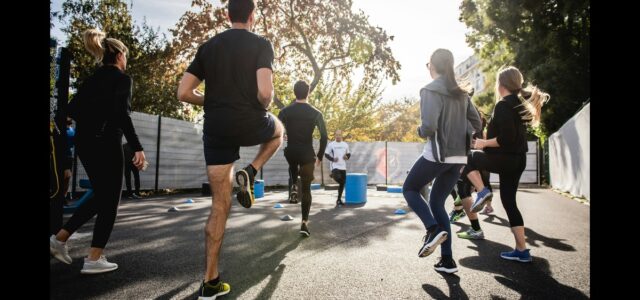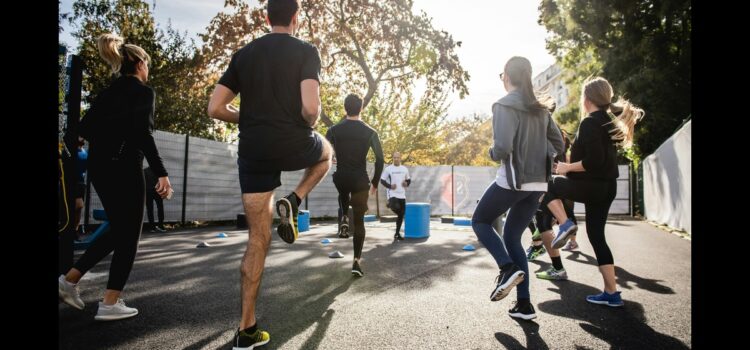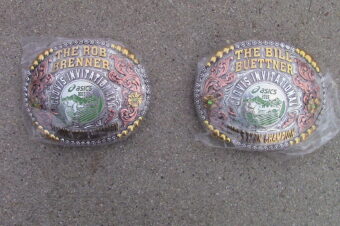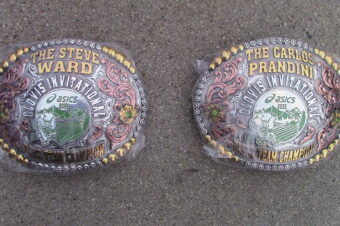

Warm-Up Routines That Actually Work for Youth Athletes
BlogHealth & FitnessHigh School Baseball/SoftballMore SportsMulti-SportProduct Reviews/Top Ten Lists/Resources/Tips May 1, 2025 Lauren Keating 0

The Do’s and Don’ts of a Proper Warm-Up
Warming up is one of the most important parts of an athlete’s routine, yet it’s often overlooked. A proper warm-up is essential for performance, getting the blood flowing to get the muscles (including your heart and lungs) ready to work. It is also key for preventing injury.
Many athletes rush through a warm-up or worse—skip it altogether. Whether it’s because of being crunched for time, or the eagerness to jump right into training, skipping this crucial aspect of a workout negatively affects athletes from being on their A-game.
A warm-up can still be simple to be effective. Whether preparing for a game, a practice, or a training session, athletes need warm-up routines that actually work—meaning they’re effective, engaging, and tailored to youth athletes across all sports.
Why Warm-Ups Matter
Before learning about specific exercises to incorporate into a warm-up, it’s important to understand why warm-ups are necessary:
- Increases blood flow to muscles, preparing them for activity.
- Raises body temperature, improving muscle elasticity and reducing the risk of strains.
- Activates the nervous system, which helps with coordination and reaction time.
- Mentally prepares athletes by helping them to get in the right frame of mind to exercise, for practice, or for competition.
What is a Good Warm-Up
A good warm-up routine is:
- Dynamic (not static): This means movement-based stretching and exercises like walking lunges, not sitting still, and reaching for your toes.
- Sport-specific: Include movements that mimic the actions of the sport. For example, runners should include A-skips and B-skips.
- Progressive: Start slow and build intensity.
The Do’s of a Proper Warm-Up
1. Do Start With Light Cardio
Begin with three to five minutes of light aerobic activity to raise your heart rate and increase blood flow. Jogging or jumping jacks are great choices. This warms your muscles and gets your body ready to move.
2. Do Include Dynamic Stretching
Dynamic stretches involve movement and help improve flexibility and mobility. Examples include leg swings, arm circles, lunges with a twist, or high knees. These movements prepare muscles for the patterns used during sports.
3. Do Make It Sport-Specific
Your warm-up should mimic the movements you’ll do in your sport. If you play soccer, include quick direction changes and ball touches. For basketball, practice short sprints and jumping drills. This improves muscle memory and mental readiness.
4. Do Focus on Muscle Activation
Use warm-up drills that activate key muscle groups like the core, glutes, and shoulders. Exercises like planks and bridges help stabilize joints and enhance movement efficiency.
5. Do Stay Consistent
Warming up should be a non-negotiable part of every training session or game. A consistent routine builds good habits and reinforces its importance.
A Sample 10-Minute Warm-Up Routine
Here’s a warm-up that works for most sports, from soccer to basketball to track. Adjust as needed for your specific sport or activity.
1. Jog & Mobilize (2 minutes)
- Light jogging around the field or gym.
- Add in some arm circles, shoulder rolls, and ankle rolls.
2. Dynamic Stretching (3 minutes)
- Leg swings: Forward/backward and side-to-side (10 per leg).
- Walking lunges: Add a twist to activate the core (10 steps).
- High knees: 15-20 seconds.
- Butt kicks: 15-20 seconds.
- Frankensteins (straight-leg kicks): 10 each leg.
3. Activation Drills (3 minutes)
- Jumping jacks: 30 seconds.
- Skater hops (side-to-side bounds): 30 seconds.
- Fast feet in place: 15 seconds on, 15 seconds off (repeat twice).
- Plank with shoulder taps: 30 seconds.
These drills wake up key muscle groups—like the core, hips, and shoulders—involved in most athletic movements.
4. Sport-Specific Movements (2 minutes)
Finish the warm-up with drills that look like the game:
- For soccer: Short dribbling drills, quick foot taps on the ball.
- For basketball: Layup lines or quick defensive shuffles.
- For baseball: Mimic throwing motion or light swings with a bat.
- For track: Short sprints or stride-outs.
The Don’ts of a Proper Warm-Up
1. Don’t Skip A Warm-Up
Skipping a warm-up might save a few minutes, but it increases the risk of muscle strains, poor performance, and even long-term injury. Always make time for it. Make this a non-negotable by thinking of it as part of practice, or your workout.
2. Don’t Start With Static Stretching
Holding stretches for long periods (like touching your toes for 30 seconds) should be saved for the cool-down when muscles are warm and need to relax.
3. Don’t Go Too Hard Too Soon
A warm-up is just that—a warm-up. If you start sprinting or doing explosive movements too early can cause harm. Your muscles and joints may not be ready to go all out and this can lead to injury.
4. Don’t Rush Through It
A rushed warm-up is often ineffective. Make sure you spend at least 8–10 minutes warming up properly, giving each part of your body attention.
By knowing what to do—and what not to do—you can start every practice or game on the right foot.









No comments so far.
Be first to leave comment below.